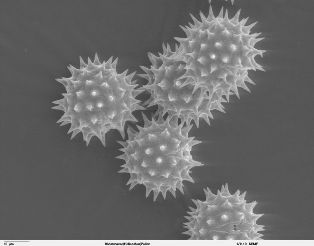the art of plant sex
The presence of self-incompatibility is seen in
sunflowers which is why they rely heavily on pollen movement between
plants by insects and bee colonies.
These organisms benefit the plant because they carry
 pollen from
plant to plant, allowing cross-fertilization to take place.
pollen from
plant to plant, allowing cross-fertilization to take place.
The bloom period is during the summer where the seed
abundance is high.
Flowers contain both male and female producing parts.
In order for reproduction to take place, the pollen (which will
produce the sperm) has to come into contact with the stigma of the
pistil (which contains the ovule with the egg).
Pollen is pushed out the top of the style as it grow, 
The pollen then grows down the style, and in a short time sperms are discharged, one of which will fuse with the egg and thereby initiate the development of a new seed. However if by chance the flower does not receive any pollen from an outside source, the stigma curves around and eventually contacts its own pollen so that self-pollination may then take place, thus ensuring seed set. From here the seeds can be harvested and then planted, beginning the growth process once again.
Extensive crossing and hybridization has lead to an
increase in the range of flower colors including shades of yellow, brown
and white.